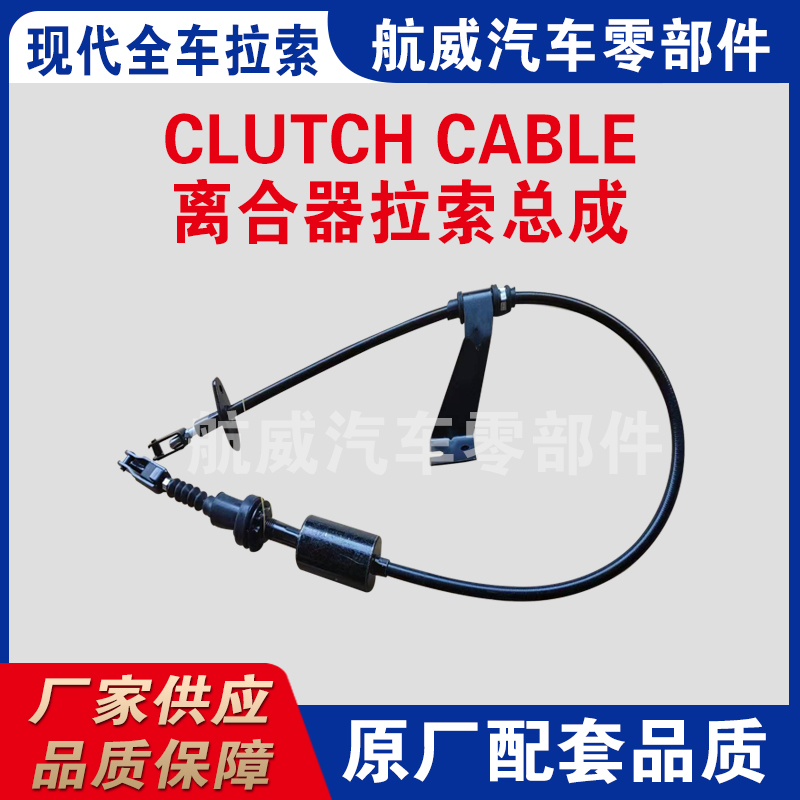gear linkage cable
Understanding Gear Linkage Cables A Comprehensive Overview
Gear linkage cables play a crucial role in the functioning of modern vehicles, particularly in automatic transmission systems. These cables serve as the connection between the gear shift lever and the transmission itself, allowing drivers to smoothly change gears without any mechanical interference. In this article, we’ll explore the importance of gear linkage cables, their design and mechanics, typical issues that arise, and maintenance tips to ensure longevity and efficiency.
The Importance of Gear Linkage Cables
In the heart of a vehicle's transmission system, gear linkage cables facilitate communication between the driver and the vehicle's transmission. When a driver moves the gear lever, the cable transmits this motion to the transmission, engaging the correct gear for the desired power output and speed. This linkage is essential not only for shifting gears but also for ensuring that the vehicle operates efficiently under various driving conditions.
The reliability of gear linkage cables directly impacts a vehicle's performance. A malfunction can lead to difficulties in shifting gears, which can compromise safety and increase wear on the engine. Because of their critical function, understanding how these cables work and maintaining them is vital for any vehicle owner.
Design and Functionality of Gear Linkage Cables
Gear linkage cables are typically made from durable materials to withstand the wear and tear of everyday use. They consist of a flexible outer casing that protects a metal core cable, which transmits the necessary motion. The design allows for flexibility while maintaining resistance to stretch and bending, critical for smooth gear transitions.
The operation of these cables involves a relatively simple mechanism. When a driver shifts the gear lever, the attached cable moves accordingly, pulling or pushing mechanisms within the transmission. Most modern vehicles utilize either a push-pull cable design or a hybrid mechanism that combines cable and rod linkage. Each type has its own set of advantages depending on the vehicle configuration and intended performance characteristics.
Common Issues with Gear Linkage Cables
Despite their robustness, gear linkage cables are prone to certain issues that can affect vehicle performance. Common problems include fraying or wear of the cable, which can lead to slippage or complete failure. If the outer casing cracks or if dirt and debris infiltrate the cable housing, the cable can become stiff or blocked, making gear changes difficult.
gear linkage cable

Additionally, improper installation or alignment of the cable can lead to erratic shifting, where the vehicle may not engage the desired gear or may shift unexpectedly. Regular inspection and maintenance can help catch these issues early on, avoiding costly repairs or unsafe driving conditions.
Maintenance Tips for Gear Linkage Cables
To ensure that your gear linkage cables function optimally, regular maintenance is key. Here are some tips to keep in mind
1. Regular Inspection Check the cables visually for any signs of wear, cracking, or fraying. Pay attention to the outer casing, as any damage can affect cable performance.
2. Lubrication While many cables come pre-lubricated, periodic application of lubricant can help minimize friction and prolong the life of the cables. Use a suitable lubricant recommended for automotive cables.
3. Timely Replacement If you notice any issues when changing gears or if the cable appears damaged, replace it immediately. Using original equipment manufacturer (OEM) parts ensures compatibility and reliability.
4. Consult Professionals If you're unsure about inspecting or replacing gear linkage cables, consult a professional mechanic. They can provide a thorough evaluation and perform any necessary repairs.
Conclusion
Gear linkage cables are an integral part of a vehicle’s functionality, directly influencing the ease and safety of gear shifting. Understanding their design, potential issues, and how to maintain them can lead to better vehicle performance and greater driving confidence. By staying proactive with inspections and maintenance, vehicle owners can ensure that their gear linkage system operates smoothly for many years to come. Whether driving a compact car or a heavy-duty truck, attention to these components is crucial for an enjoyable and safe driving experience.
-
Workings of Clutch Pipe and Hose SystemsNewsJun.04,2025
-
The Inner Workings of Hand Brake Cable SystemsNewsJun.04,2025
-
The Secrets of Throttle and Accelerator CablesNewsJun.04,2025
-
The Hidden Lifeline of Your Transmission Gear Shift CablesNewsJun.04,2025
-
Demystifying Gear Cables and Shift LinkagesNewsJun.04,2025
-
Decoding Clutch Line Systems A Comprehensive GuideNewsJun.04,2025
